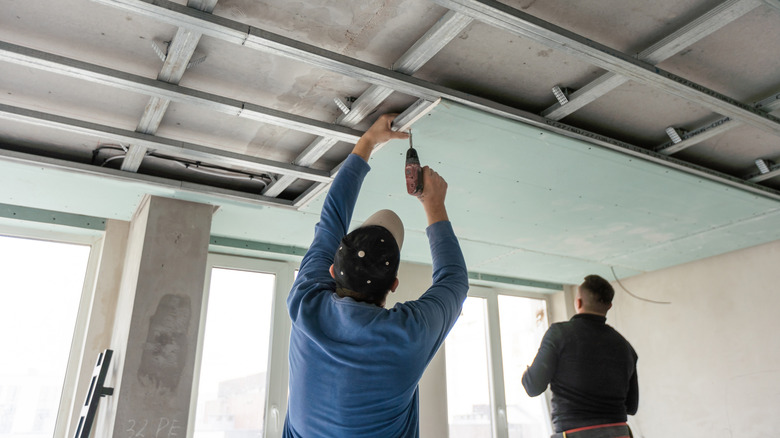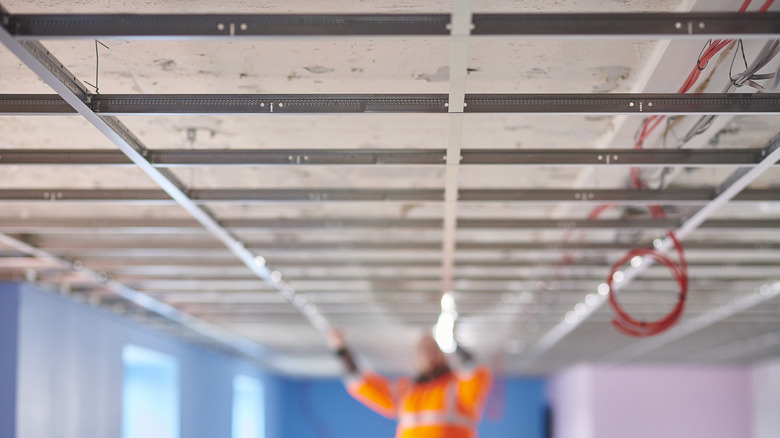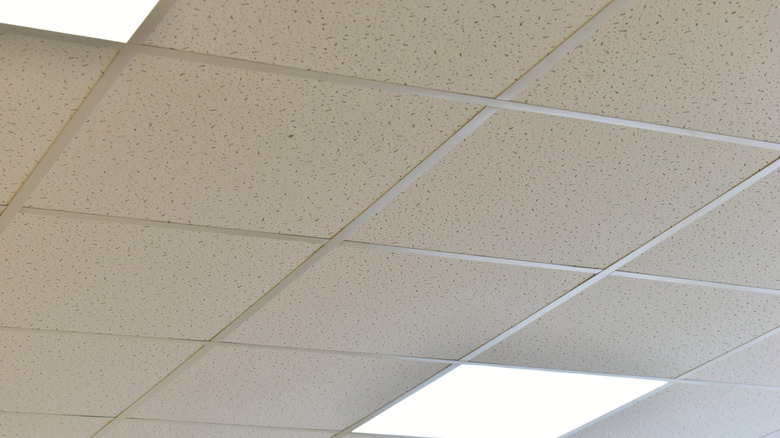Does A Drop Ceiling Make Sense For Your Basement? Here's What You Should Know
Whether you're trying to make your unfinished basement more welcoming or are fully finishing your lower level, covering the ceiling is often part of the project. Drop ceilings may come to mind when you're thinking of basement ceiling options, but they're not the only possibilities for finishing the space. Looking at the pros and cons of a drop ceiling can help you decide if it's the right option for your project.
In basements, the grid style of drop ceiling is a popular way to finish the ceiling quickly. It uses a grid made from long metal strips to support lightweight ceiling tiles. Since the drop ceiling sits lower than the rafters you're used to seeing, it hides everything neatly to give your basement a finished look overhead.
Even though drop ceilings are popular, they aren't always the best option for a basement. The dropped design cuts down on space overhead, which could be an issue if your basement ceiling is already low. Other potential issues include the appearance of these ceiling products and the longevity they offer. Drop ceilings and drywall both offer suitable basement ceiling options. It's a matter of what works best for your situation and preferences.
Pros of a drop ceiling in a basement
The installation location below the existing ceiling, whether it's a finished drywall ceiling or exposed rafters, appeals to handy homeowners. If you have basic DIY skills, you can typically install a drop ceiling yourself. However, plan to take extra time to get the installation correct. While you could install a drywall ceiling yourself, it can be difficult to lift the panels and anchor them on the ceiling, especially alone. It also takes skill to tape and mud drywall well.
Once you install a drop ceiling, you still have access to everything above it. By removing one or more of the ceiling tiles, you can access plumbing, wiring, and other hidden components, which allows for easy repairs or changes. Drop ceilings also allow you to replace tiles individually, making ceiling repairs easier if a tile becomes damaged or stained. However, you shouldn't have to worry about that too often since drop ceilings are relatively low-maintenance, especially compared to drywall, which could crack and need patching.
Some people choose drop ceilings for their acoustic benefits. Many of the tile options suppress sounds, which creates quieter spaces and more separation between the basement and upper floors. This can be helpful if you plan to use the basement as a theater room or play room where the activities will generate lots of sound. Sound suppression can also create a quieter environment if you'll use the basement as a home office or bedroom. Choosing acoustic ceiling tiles specifically gives you the most sound protection for your space.
Cons of a drop ceiling in a basement
Most drop ceilings are installed at least 3 inches below the existing ceiling, but some require 4 to 6 inches. Building codes typically specify a minimum ceiling height of 7 feet. Before choosing a drop ceiling for your basement, mark where the new ceiling will sit and measure how high it will be from the basement floor. If you're adding new basement flooring, factor in any added height the material will cause. The height issue could affect lighting, which is often more difficult to install on a drop ceiling compared to a drywall ceiling. Low-profile light fixtures may be necessary if the drop ceiling leaves you with very little clearance in your basement.
For some people, the biggest drawback is the look of a drop ceiling. It might make you think of a sterile commercial space rather than a cozy home. Modern drop ceilings come in a range of styles and finishes to improve the look and make it fit your design preferences. If you install the ceiling yourself, you need to be meticulous to ensure proper installation to ensure the ceiling looks as good as possible. Even with a perfect installation, a drop ceiling may not be the best choice if you can't get past the aesthetics.
A drop ceiling could also affect what buyers think of your home. Drywall ceilings tend to be more appealing to buyers, potentially increasing your home's value. Drop ceilings also have a much shorter lifespan than drywall, typically only lasting 10 to 15 years. Drywall holds up for 40 to 70 years unless it's exposed to water or other damage.


